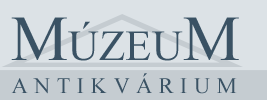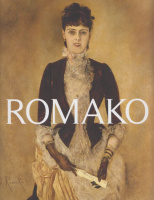kategóriák
- Közlekedés ajánlójegyzék
- Szocreál ajánlójegyzék
- Reklám ajánlójegyzék
- Fotó ajánlójegyzék
- Kínai-japán ajánlójegyzék
- Szentkép ajánlójegyzék
Új árakkal! - Új szentkép ajánlójegyzék II.
- 12 érdekes régiség
 Könyv
Könyv
- Logikai feladványok
- Gyermeknevelés
- Albumok
- Barlangászat
- Bányászat
 Bestseller
Bestseller
- Bibliográfia
- Divat, divattörténet
- Egyéb
- Erotika
- Esszé, tanulmány
- Etológia
 Ezotéria
Ezotéria
- Életrajz
- Fantasy
- Filozófia
 Földrajz
Földrajz
 Gasztronómia
Gasztronómia
- Hegymászás
 Hobbi
Hobbi
- Humor
 Idegennyelvű könyvek
Idegennyelvű könyvek
 Ifjúsági- és gyermekirodalom
Ifjúsági- és gyermekirodalom
- Informatika
- Irodalomtörténet
- Ismeretterjesztő
- Jog
- Kalendárium, naptár
- Kertészet
- Képregény
- Kézimunka, hímzés
- Klasszika-filológia
- Kommunikáció
- Könyvtörténet, nyomdászat
- Közgazdaság
- Kriminalisztika
- Lexikon, Kézikönyv
- Ló, lovaglás
- Média
- Méhészet
- Militária, kitüntetés
- Minikönyv
 Művészet
Művészet
- Néprajz
- Filatélia, numizmatika
- Nyelvészet
- Orientalisztika
 Orvosi
Orvosi
- Pedagógia
 Pszichológia
Pszichológia
- Politika
- Régészet
- Régi ponyva
- Retorika
- Reklám
- Sci-fi
 Sport
Sport
 Szépirodalom
Szépirodalom
- Szociálpszichológia
- Szociológia
- Szórakoztató irodalom
- Szótár, Nyelvkönyv
- Társadalomtudomány
 Technika
Technika
- Térképészet
 Természettudomány
Természettudomány
- Töredékek
 Történelem
Történelem
- Újság, Folyóirat
- Vadászat
 Vallás
Vallás
 Bibliofilia
Bibliofilia
 Régiség
Régiség
 Metszet
Metszet
 Térkép
Térkép
 Fotó
Fotó
 Papírrégiség, Aprónyomtatvány
Papírrégiség, Aprónyomtatvány
 Plakát
Plakát
- Cirkusz
- Modern grafika
- Szocreál
- NER Irodalom
- Egyéb
kosár
üres a kosár
nincs bejelentkezve
Hussl-Hörmann, Marianne - Hans-Peter Wipplinger (Hrsg./Ed.) : Anton Romako - Beginn der Moderne / The Beginning of Modernism
- leírás
- további adatok
Languages: German, English.
Anton Romako was arguably the most idiosyncratic artist in Austrian painting of the late 19th century. Meeting with incomprehension and contempt, his oeuvre changed the paradigms of perception and depicting reality in an unconventional manner and ahead of its time. What was particularly unusual was that different painterly tendencies coalesced in Romako’s work simultaneously – from realism and Impressionism all the way to a new psychologizing expressive art.
Especially the paintings of his last 14 years, which Romako spent in Vienna from 1876, allow us to trace his development from a popular manner of depiction towards a fundamental renewal of history-, genre-, and portrait painting. At the point of intersection between a traditional naturalism and its affected exaggeration, Romako distanced himself from the conventional concept of rendering reality and embarked on new paths of perception.
Romako’s psychologizing painting did go on to inspire the representatives of Vienna’s early Expressionism, especially Oskar Kokoschka and Egon Schiele.
Anton Romako war einer der eigenwilligsten österreichischen Künstler des späten 19. Jahrhunderts. Er verrückte in kleinen malerischen Nuancen konventionelle Darstellungsformen und eröffnete damit Wege hin zu neuen, psychologisierenden Interpretationen. Ausgebildet als Historienmaler in München und Wien erwirbt sich Romako in Rom innerhalb zweier Jahrzehnte Ruhm und Anerkennung als Porträtist und hervorragender Genremaler. Nach der Trennung seiner Frau 1875 kehrte er nach Wien zurück und schuf nun Werke, deren eigenwillige Kombination von ausdrucksstarker Linie und freier malerisch abstrahierender Pinselführung das Verständnis seiner Zeit überforderte. In den 1880er-Jahren entstanden Meisterwerke, die bald nach 1900 richtungsweisend für die Vertreter des Wiener Frühexpressionismus wurden, allen voran Oskar Kokoschka und Egon Schiele.
Anton Romako was arguably the most idiosyncratic artist in Austrian painting of the late 19th century. Meeting with incomprehension and contempt, his oeuvre changed the paradigms of perception and depicting reality in an unconventional manner and ahead of its time. What was particularly unusual was that different painterly tendencies coalesced in Romako’s work simultaneously – from realism and Impressionism all the way to a new psychologizing expressive art.
Especially the paintings of his last 14 years, which Romako spent in Vienna from 1876, allow us to trace his development from a popular manner of depiction towards a fundamental renewal of history-, genre-, and portrait painting. At the point of intersection between a traditional naturalism and its affected exaggeration, Romako distanced himself from the conventional concept of rendering reality and embarked on new paths of perception.
Romako’s psychologizing painting did go on to inspire the representatives of Vienna’s early Expressionism, especially Oskar Kokoschka and Egon Schiele.
Anton Romako war einer der eigenwilligsten österreichischen Künstler des späten 19. Jahrhunderts. Er verrückte in kleinen malerischen Nuancen konventionelle Darstellungsformen und eröffnete damit Wege hin zu neuen, psychologisierenden Interpretationen. Ausgebildet als Historienmaler in München und Wien erwirbt sich Romako in Rom innerhalb zweier Jahrzehnte Ruhm und Anerkennung als Porträtist und hervorragender Genremaler. Nach der Trennung seiner Frau 1875 kehrte er nach Wien zurück und schuf nun Werke, deren eigenwillige Kombination von ausdrucksstarker Linie und freier malerisch abstrahierender Pinselführung das Verständnis seiner Zeit überforderte. In den 1880er-Jahren entstanden Meisterwerke, die bald nach 1900 richtungsweisend für die Vertreter des Wiener Frühexpressionismus wurden, allen voran Oskar Kokoschka und Egon Schiele.
| állapot: |      |
| kategória: | Könyv > Művészet > Képzőművészet > |
| kategória: | Könyv > Művészet > Képzőművészet > kiállítási katalógus > |
| kategória: | Könyv > Idegennyelvű könyvek > Angol nyelvű > |
| kategória: | Könyv > Idegennyelvű könyvek > Német nyelvű > |
| kiadó: | Verlag der Buchhandlung Walther König, (2018) |
| cikkszám / ISBN: | 0048540 |
| kötés: | fűzve |
| oldalszám: | 199 |
| könyv nyelve: | egyéb |










 Telefon:
Telefon: E-mail:
E-mail:







